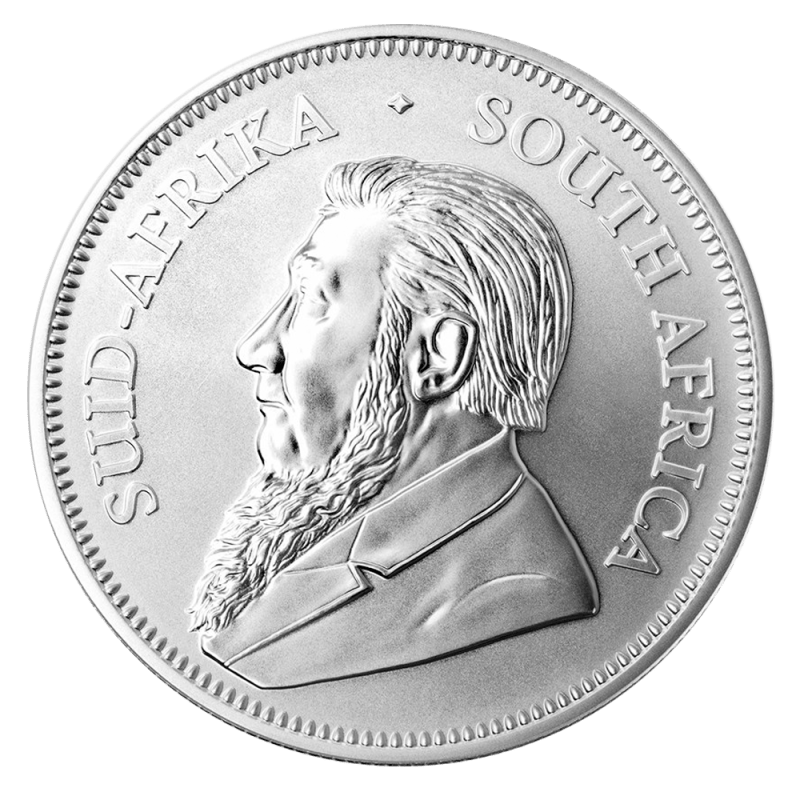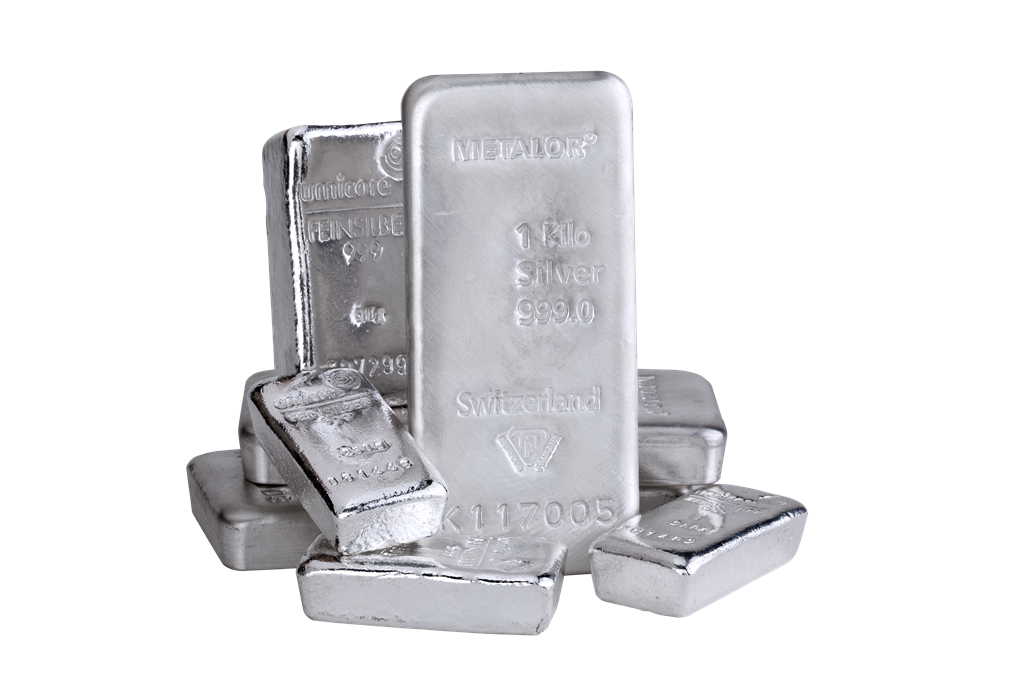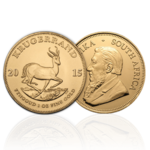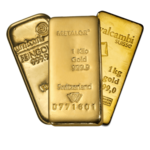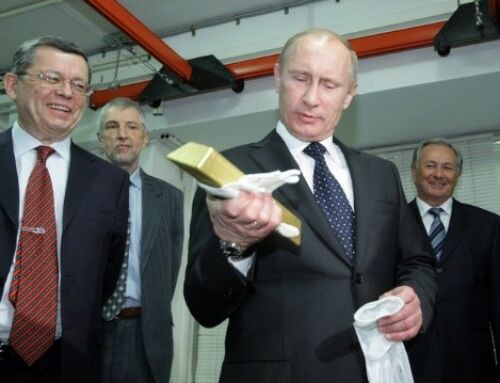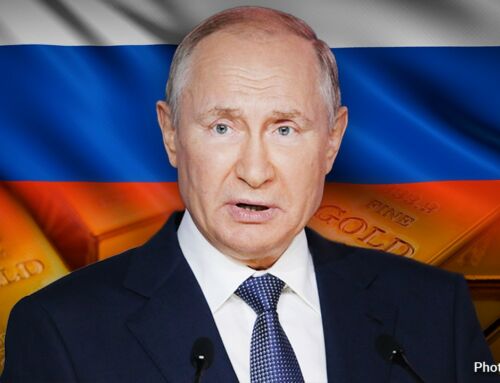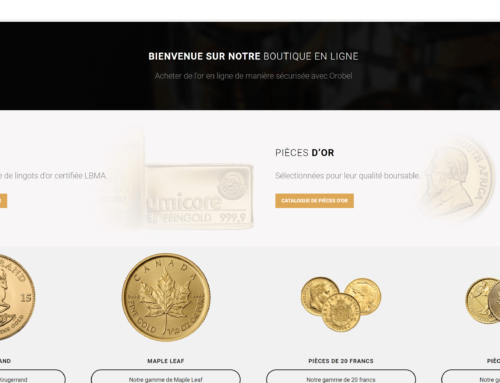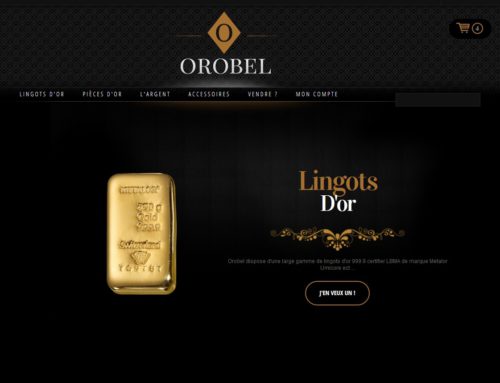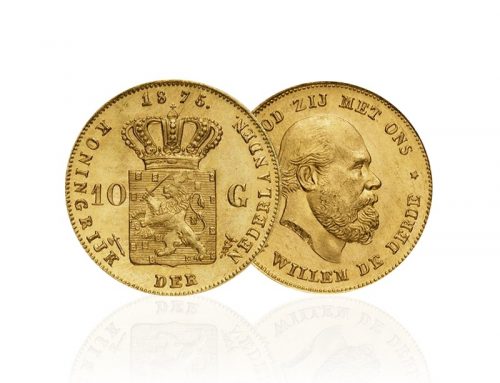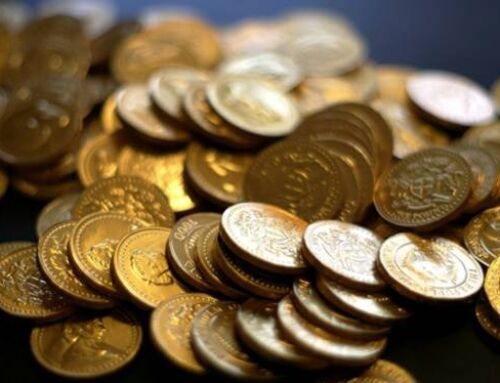From gold and silver coins to paper money : the History of Money
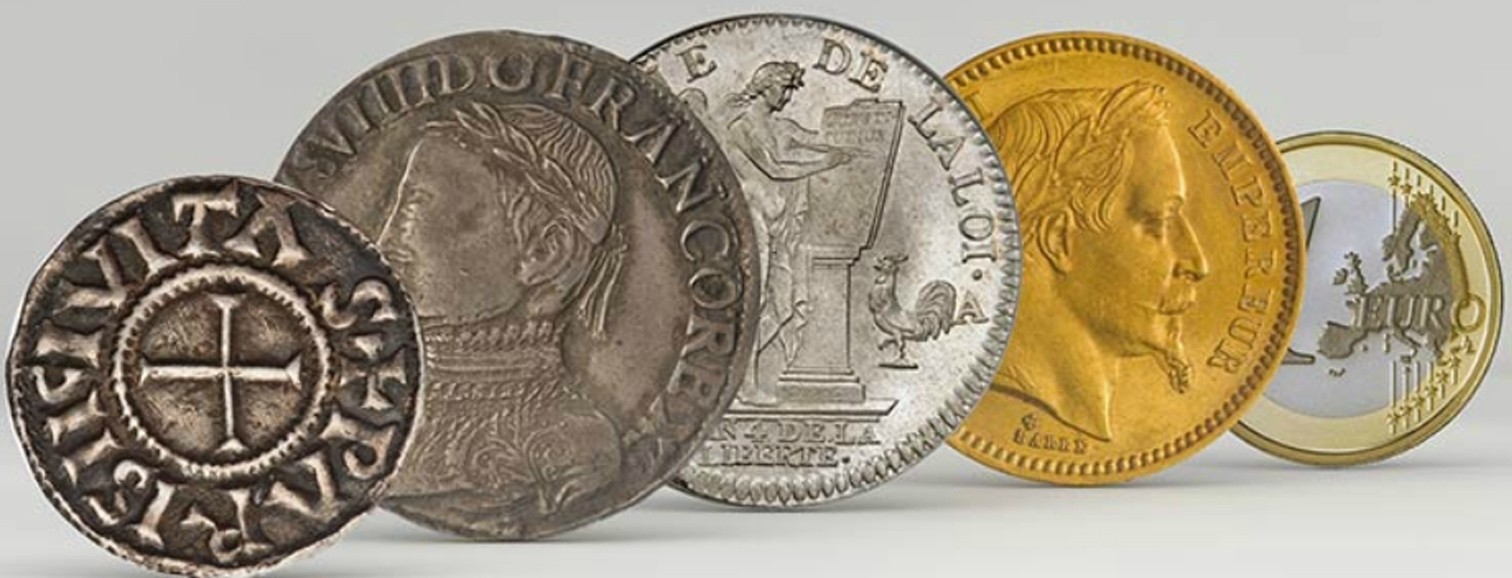
In Roman times, washing powders did not exist and they used ammonia extracted from fermented urine to give clothes looking new. The emperor Vespasian (69-79), anxious to make some additional revenue, raised a tax on urinals. When his son Titus in him the complaint, the emperor remained famous aphorism blurted: « pecunia non olet » (money does not smell). This article presents the main stages of the history of money.
Primitive money
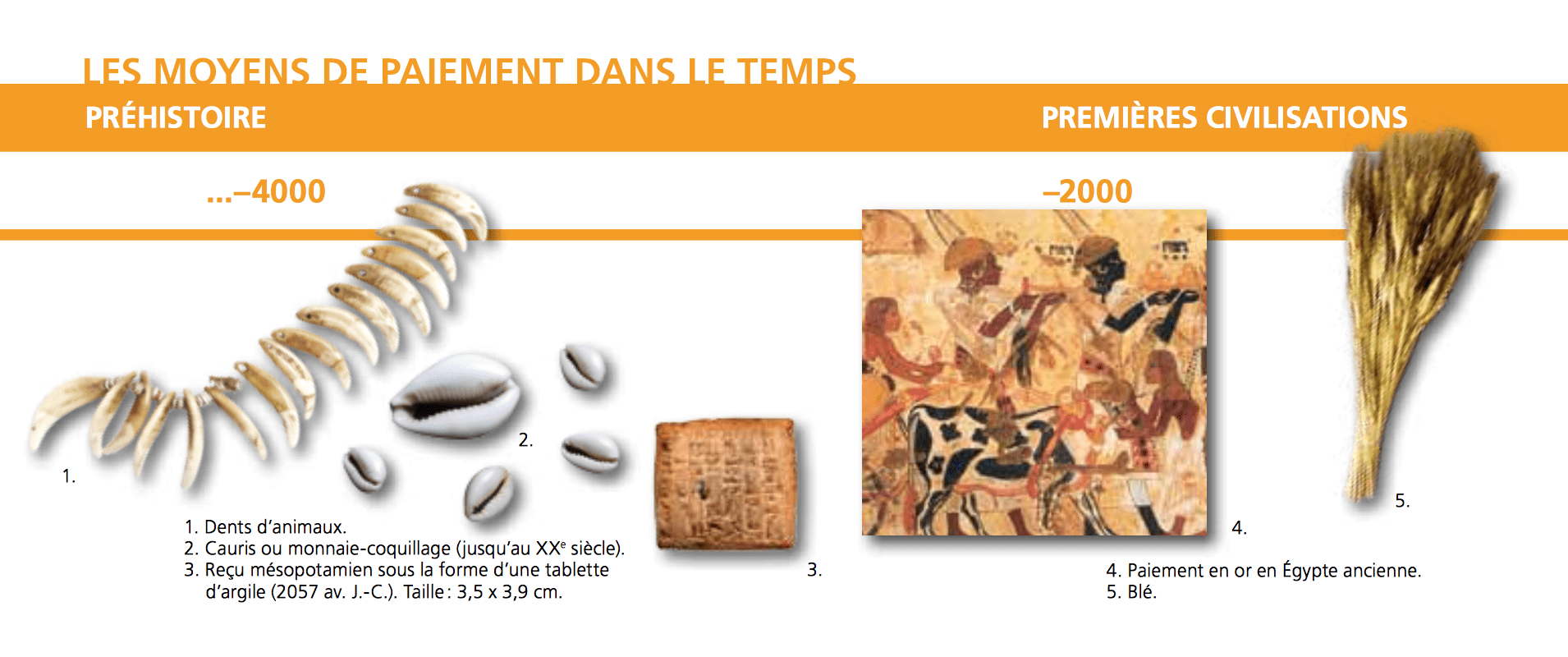 The Greeks and Romans of the Antiquity, settled their beef transactions taking as reference unit (pecus in Latin means herd from which the French word « pecuniary »). Other people used salt, shells, beads and other objects. But this type of medium of exchange proved much less suitable for travelers traders.
The Greeks and Romans of the Antiquity, settled their beef transactions taking as reference unit (pecus in Latin means herd from which the French word « pecuniary »). Other people used salt, shells, beads and other objects. But this type of medium of exchange proved much less suitable for travelers traders.They needed all accepted means of exchange, not too large, and especially non-perishable. The salt was highly valued, appreciated and wealth factor, standard of value and means of payment. In the fourteenth century, forty salt bars were worth a gold bar. Salt and cattle have left traces in our language. Salary and balance refer to the word sal (salt Latin) and the English word fee (gratuity, compensation) has the same root as the Dutch word vee, which means cattle.
This is of so-called primitive currencies. The original currency has indeed survived until recently in some regions, for example in the form of copper son in the center of the African continent, or of cigarettes in Western Europe during the Second World War.
Coins as money
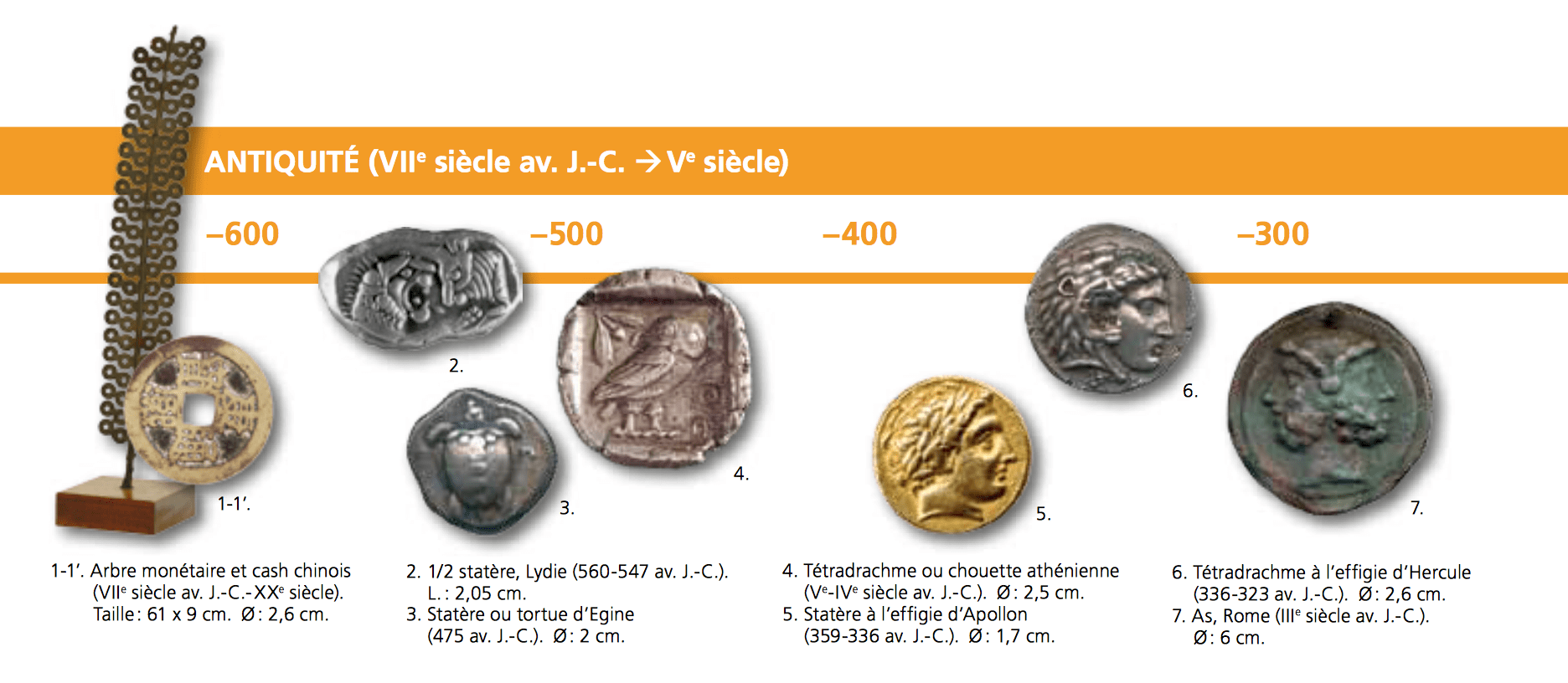
At the time when China created its currency, the phenomenon appeared in the West, particularly in Lydia where the Pactolus and Hermus brewed precious sediments: a natural alloy of gold and silver called electrum. The presence of small amounts of base metal such as lead and the change in the Golden Ratio / silver (40-60%) did not facilitate the determination of their value. We tried to separate metals. The first gold and silver coins made their appearance during the reign of Croesus, the last king of Lydia (about 560-547 BC.).
The use of money then spread widely in Persia, whose daric gold (the Persian king Darius) climbed to the rank of international currency.
In the Greek world, in the sixth and fifth centuries BC. BC, the Athenian owl silver (tetradrachms) dominated the money market. Alexander the Great uniformisa circulation with gold stater with Athena Pallas features and tétradrachme contained Heracles.
Under his successors portrait appeared on currency: the gods and goddesses classics were soon accompanied by the idealized portrait of Alexander. Around 305 BC. BC, the Egyptian ruler Ptolemy I Soter put into circulation a series of coins bearing his image. In Rome, Julius Caesar was the first to appear in his lifetime on a coin.
From bronze to copper, to silver and gold in weight and measures.
The first Roman coins were silver didrachmas about 7.5 g. It was not until 211 BC. They opted for AD the denarius (4.5 g) carrying a helmeted Roma on the obverse and the Dioscuri on the reverse. This piece became their currency of reference and had considerable success. Roman coins were generally of a high titer of precious metal. Gold coins reached 95% or more. Under the Republic, the high content was also customary for silver coins. But she slowly deteriorated under the Empire back to its lowest level to 270, with a antoninien « money » that contained only 2% of the precious metal.
Paper money
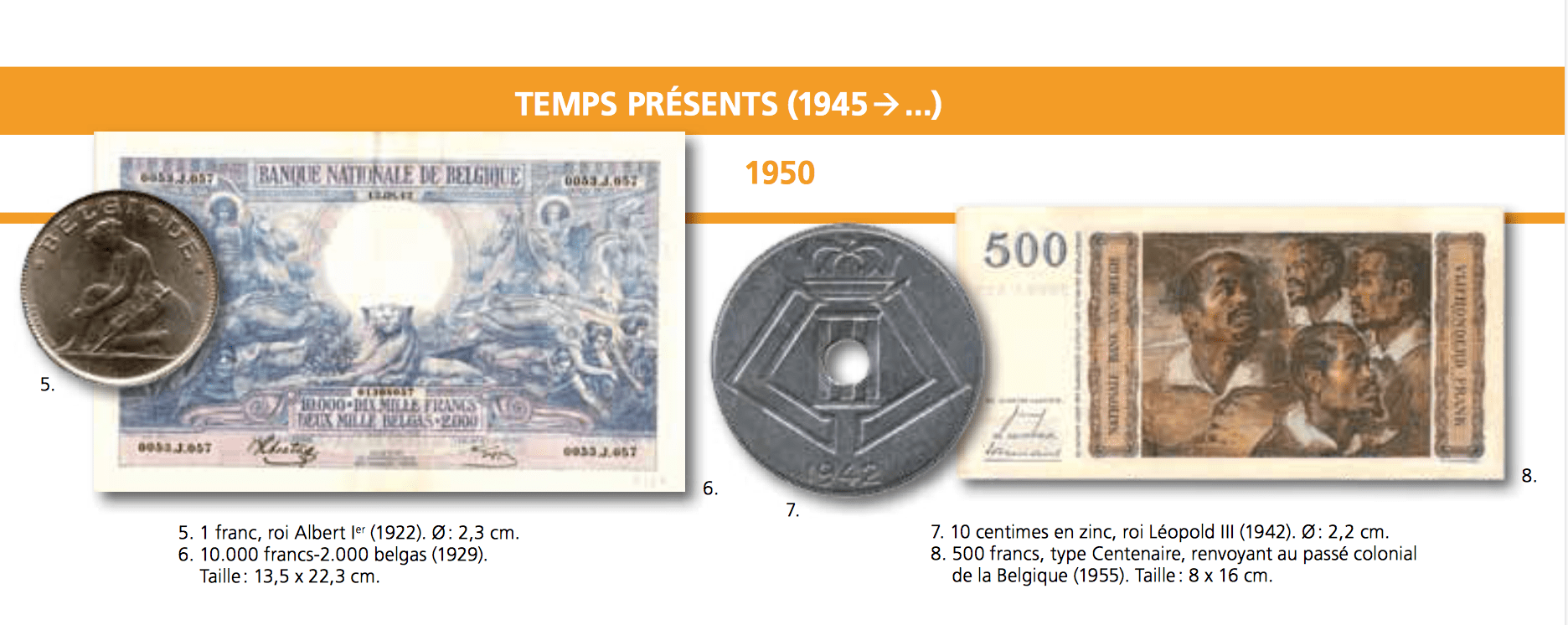
The ancestors of the banknote, certificates or deposit receipts, back to a time well before the Middle Ages. They were issued to individuals or traders in exchange for metals or valuables they remettaient the depositary. It was an IOU of the goldsmith or the bank for deposits made by customers.
The banknote itself appeared during the seventeenth century. It took off until the nineteenth century. This is initially emissions private banks and central banks.
- In 1661 the private bank Stockholms Banco issued for the first time in Europe, the « Notes in bearer » that were not fully covered by a metal deposit.
- From 1668 the Rikets Ständers Bank, now Bank of Sweden, created the « transfer ticket » that he first had to register in their name before you can negotiate.
- In 1694, the birth of the Bank of England brought a uniform start in a circulation system composed of banknotes and goldsmith tickets.
- The following century Scottish economist John Law obtained the Regent permission to create a bank (Banque Générale, 1716) and issue tickets, not covered by metal deposits but secured by land. The experiment was a failure and public confidence in this new form of currency was seriously affected.
- Born in 1822, the General Society of Belgium (later called General Society) began to turn notes in circulation to promote the domestic industry. Soon after independence, in 1837, they were denominated in francs. Other banks also obtained the right to issue, in particular the Bank of Belgium, the Liège Savings Bank and Fund and Bank of Flanders.
During World War II, traffic tripled, causing the Gutt operation with the aim of removing and replacing notes in circulation.
In 1946, the National Bank put into circulation Dynasty series, and then, from 1950, the Centenary series. The last series of Belgian franc banknotes was devoted to artists who have marked the twentieth century art.
On 1st January 2002, twelve printing spread throughout the eurozone – except Luxembourg – had printed 15 billion euro cuts, of which 6.6 billion were put into circulation on 1 January 2002.
Scriptural and electronic money
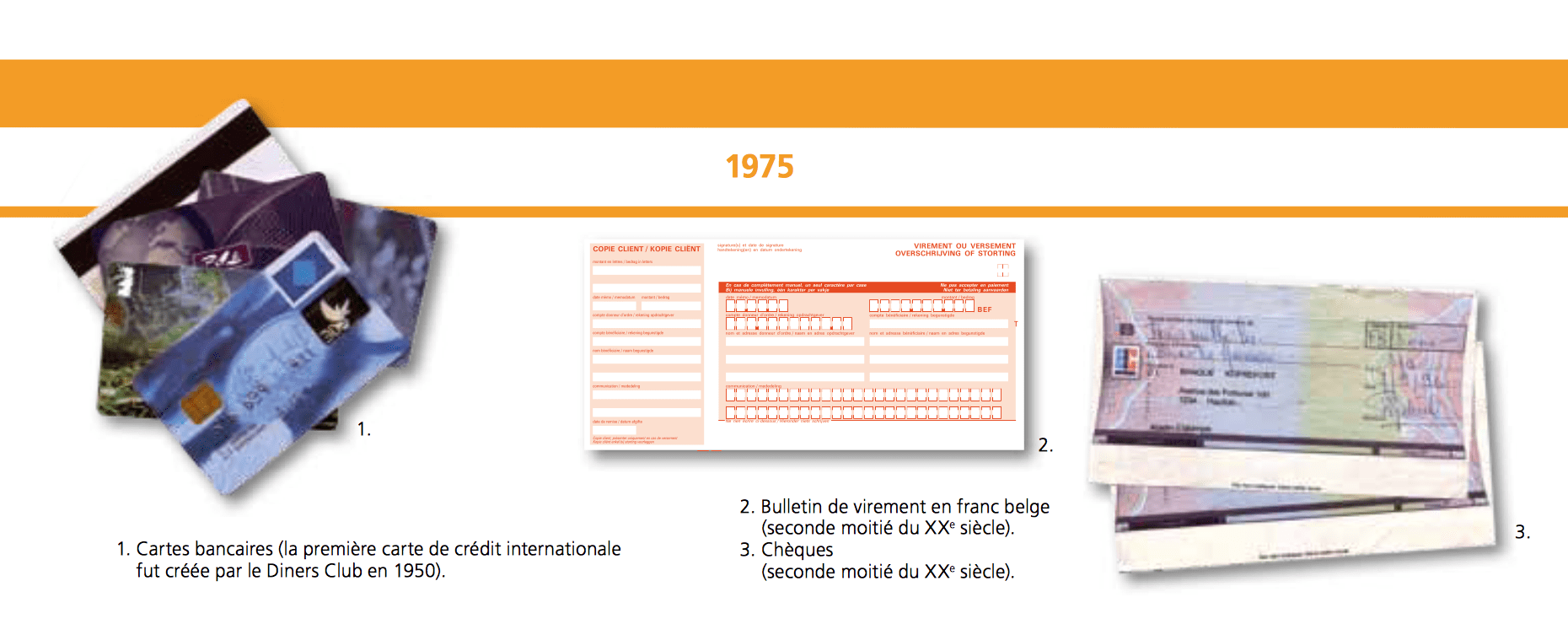
The various forms of money have changed over time. The rise of information technology leads to increasing computerization of payments. Today, different forms of money coexist dematerialized, including the so-called bank money. It allows to transfer amounts from one bank account to another through a simple set of writings that is to credit by debiting an account from another account.
These payments can be made from a transfer form but also electronically, using a debit card, credit card or online. The share of sight deposits in the total amount of currency in circulation rose steadily.
In the case of electronic money, the amount is withdrawn from an account and stored on an electronic device. This currency is based on the principle of prepayment: an amount is transferred from the customer’s account to his electronic card, amount to be used as and when payments.
That’s a long time that the mobile phone has surpassed its role as a mere phone to also become a means of payment … In addition, Wi-Fi and the Internet are undoubtedly called to further expand the fields as possible.
All news about gold on
[button type= »info » target= »_self » link= »http://orobel.biz/en/info/news.html » icon= »info-sign »]Orobel.biz[/button]
